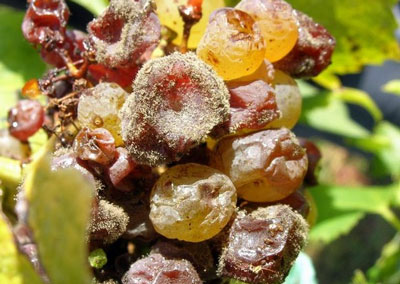VintageTexas Sunday Cyclopedia of Wine: Botrytis Cinerea
Could a rot by any other name, be so sweet?
Only if it known by its other names: Pourriture Noble (in France) or Edelfaule (in Germany). In any regards, it is known worldwide as “noble rot”, the mold that is responsible for the special characteristics and especially the taste noted in the sweet wines of Sauternes in Bordeaux region of France, Beerenauslese and Trokenbeerenauslese in Germany’s Rhine and Moselle districts, and Tokay Aszu wines from Hungary.
The mold forms on the skins of ripening grapes when exposed to humidity alternating with dry heat. Under these conditions, the mold flourishes and perforates the grape skins with the mold’s filaments. Subsequently, the grapes shrivel as their moisture content is reduced. The remaining sugars and acids are concentrated. In addition to this effect, Botrytis also changes the taste with a honeyed, complex and intensely luscious quality that is unique and characteristic in the wine world. However, under less ideal conditions (consistently wet or humid conditions), Botrytis forms grey rot and typically results in the spoilage and loss of the affected bunches of grapes.
While Botrytis can affect any of a number of grape types, it is mostly prized for the influence that it gives Semillion (in Sauternes) and Riesling (in Germany). Wines made from botrytised grapes are made in a sweet style that range in residual sugar from 8-25 percent depending on the grape variety and sugar concentration in the grapes at harvest.
Botrytised wines are also made in the Loire region of France from Chenin Blanc and Pinot Blanc, from Gewurztraminer, and other grapes in Austria, Australia, Hungary and California. However, botrytised wines from Europe tend to have the unique combination of honeyed characteristics, sweetness and crisp acidity needed in wines of this style.
Many people mistakenly, confuse the process of vinification of frozen grapes for ice wine with involving Botrytis. In fact, ice wines should not be affected by Botrytis.
— — — — —
Other references on Botrytis Cinerea:
http://www.winetrail.com/dessertwines.html
http://www.thewinedoctor.com/author/sweetnoble.shtml
http://www.winedefinitions.com/learningcenter/articles/botrytiscinerea.htm


Be the first to comment